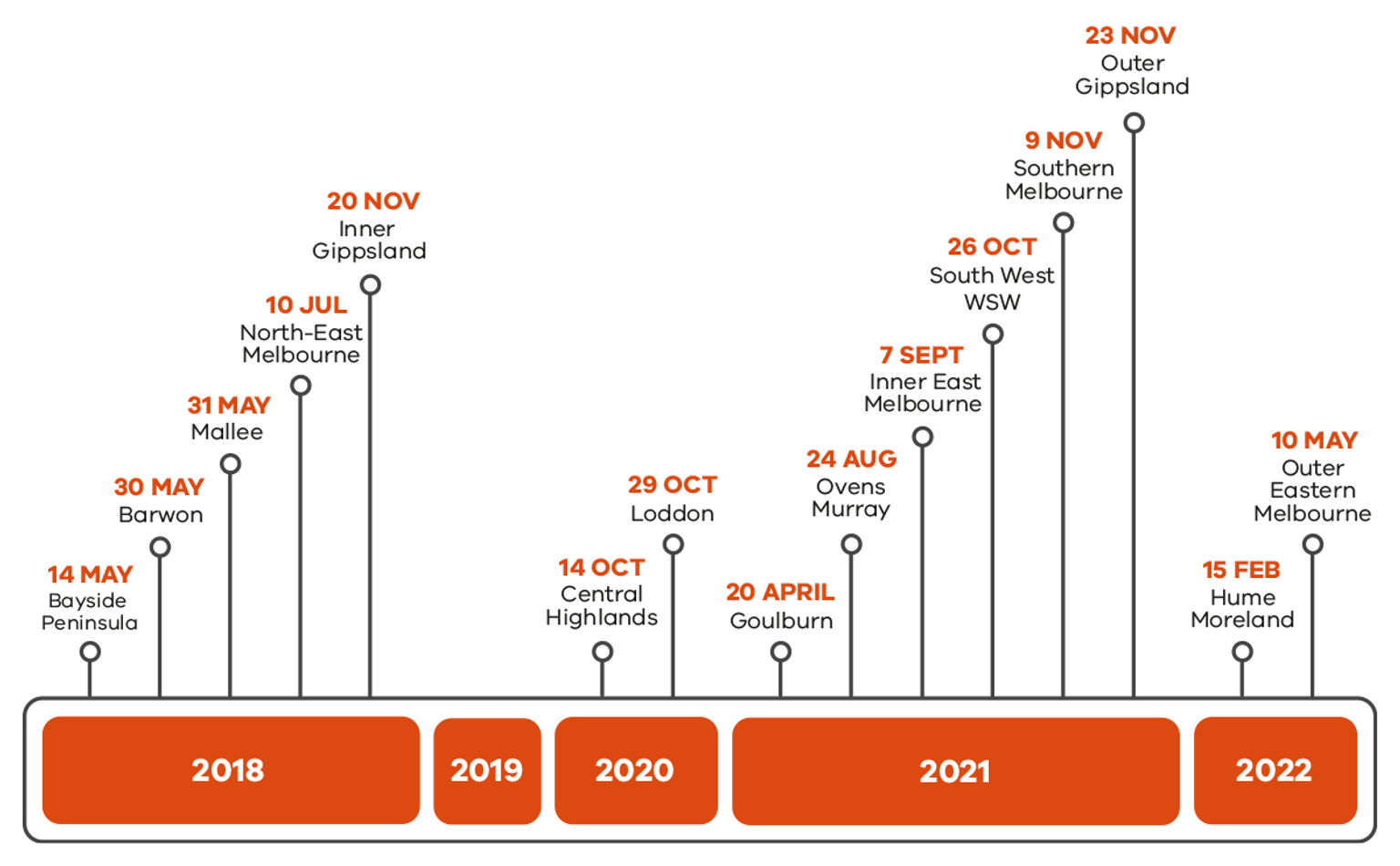Sharing experiences and data from the 4th year of service delivery
This annual report uses service provision data to explain how The Orange Door network supported people in the 2021-22 financial year. Information and data have been collected from the Client Relationship Management (CRM) system used by the staff in The Orange Door network.
This system continues to be enhanced to support best practice and gather data to inform improvements to service delivery and policy. CRM updates for the 2021-22 financial year were the result of collaboration across multiple FSV teams and aligned to the release of operational guidance. Significant enhancements included:
- more auto-population of data across CRM as well as automation of standard workflows to reduce administration burden for practitioners
- improved collection and verification of client demographic information
- better recording of practice collaboration activities within The Orange Door network
- consistent, structured service plan information, including brokerage detail
- build of CRM ‘Person 360’ – a single screen showing a summary of a client’s The Orange Door history
- changes made to improve integration between CRM and other systems
- delivery of priority Power BI reports to provide strategic and operational reports consistent with CRM improvements.
There has been an emphasis in 2021-22 on making important fields mandatory and prompting practitioners to review and edit this information when closing a case, as well as supporting workforce capability to understand client representation from priority communities.
In addition, 3 new measures have been developed to track timeliness of the client journey through The Orange Door service model:
- the time from referral to assigning to a practitioner
- the time from assigning to a practitioner to case closure
- the time from referral to case closure.
Tracking of these measures was activated in July 2021.
As data collection, operational guidance and reporting processes and practice continue to be strengthened, our ability to comment on the experiences of those accessing the network and their service needs will improve.
Presentation of the data
In many cases, the data is broken down by quarters:
- Quarter 1 (July – September 2021)
- Quarter 2 (October – December 2021)
- Quarter 3 (January – March 2022)
- Quarter 4 (April – June 2022).
Throughout the report these are referred to as Q1, Q2, Q3 and Q4. Data extracted from the CRM for this report was extracted in September and October 2022, which ensures most of the information from 2021-22 is finalised. In some instances, this report provides comparisons between data from 2018-19, 2019-20 and 2020-21.
Inherent limitations
It should be noted that due to the staggered nature of the rollout of The Orange Door network across the state, certain sites may have only been in operation for part of a financial year. For example, the 2018-19 data does not reflect a full year of operations for North East Melbourne and Inner Gippsland areas, which commenced in July 2018 and November 2018 respectively.
Similarly, 2020-21 data does not reflect a full year of operations for the Central Highlands (commencing October 2020), Loddon (commencing October 2020) and Goulburn (commencing April 2021) (Figure 2). Accordingly, comparisons involving these areas must be treated with caution.
Given the dynamic nature of the CRM, data used for comparative purposes from previous financial years was re-extracted to reflect updates to the data more accurately, after the relevant annual reports for those years were produced. Therefore, figures in this report may vary slightly from figures published in previous annual reports.
It is also important to note that due to the staggered nature of the commencement of The Orange Door sites, the opening of new sites results in additional capacity across the network, thereby contributing to growth in overall service delivery. This is particularly noticeable when comparing a previous period when fewer sites were in operation.
Updated
